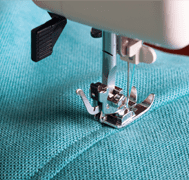 Getting an outfit from a sketch to the runway (well, maybe not a runaway at this time, due to COVID-19) and then into the hands of the customer – is a process that needs to be done fast to keep up with the rapidly-evolving fashion scene.
Getting an outfit from a sketch to the runway (well, maybe not a runaway at this time, due to COVID-19) and then into the hands of the customer – is a process that needs to be done fast to keep up with the rapidly-evolving fashion scene.
This may not seem that difficult but as businesses scale, this becomes a challenge.
It’s a complex process, right from sourcing of raw materials and getting the production started to quality control and distribution.
COVID-19 has added another layer of complexity to this process.
According to research from McKinsey, 75% of publicly listed apparel and fashion companies in North America could face challenges in managing debt as COVID-19 continues to remain in the picture.
The situation may be trickier for small- and medium-sized apparel companies.
Even though the current business climate is challenging, technology adoption can help you streamline activities and find areas where you can have cost savings – even with the backdrop of a global pandemic.
It All Starts with Embracing Change
As discussed earlier, fashion manufacturers are facing a unique set of challenges today.
Embarking on a digital transformation journey can help produce quantifiable results. As every business is different, the starting point is analyzing your requirements and focusing on the processes that are most effective for your organization.
These are some of the areas, where technology integration can deliver significant benefits:
a) Business planning
This may seem like stating the obvious, but you have to start with reviewing your business plan for your apparel brand. This is usually a tedious process as these plans are often saved in complex spreadsheet formats with different versions residing in your servers.
By employing a centralized, software-based approach, you can improve your planning activities by consolidating all the information in one place. This would give you (and your team) a bird’s eye view of the product lifecycle, changing requirements, and business targets.
b) Speed-to-market
A challenge for many fashion retailers is being able to increase speed-to-market while keeping a check on sustainability and product quality.
Changing customer preferences, personalization requirements, move to eCommerce, and increased competition are factors that affect the fashion industry more than many other industries.
Hence, it is important to ensure that all departments in your organization are collaborating effectively and information is communicated swiftly to avoid delays and production issues. This is where solutions like Microsoft Dynamics 365 Business Central can help.
They can create more alignment between departments and decrease informational siloes.
c) Raw materials management
Managing raw materials is a challenge, particularly with supply chain disruptions happening due to COVID-19 across the globe. You could easily find yourself in a situation where you have a surplus or shortage of raw materials.
This is where Industry 4.0 technologies, DDMRP, and ERP solutions come in handy. They can help automate the entire process of raw material management by helping you ascertain the amount of materials required and their associated costs.
d) Inventory management
When you have inventory being moved around from factories to distribution centers, warehouses, and stores, it is easy to lose track especially if you have a manual process in place that relies heavily on different people across these locations.
By automating inventory management and using ERP software you can eliminate many issues. For instance, adding bar codes for tracking can help you keep a track of the inventory no matter where it is headed.
e) Retail operations
Finally, retail is another key area where ERP systems can be helpful. Especially when retail is changing and eCommerce is becoming more integral than ever.
In addition to handling the logistics and inventory, ERP solutions can also help you manage merchandising activities in your brick-and-mortar stores. For instance, when it comes to markdowns and discounts, you can record prices and discounts in the system, so that it becomes easier to apply them in stores.
The possibilities are quite literally limitless…
At SHEA Global, we help you get access to solutions that are specifically designed for the fashion industry. In partnership with K3|pebblestone, we help you access systems that cover the entire lifecycle of your product – from design to sale.
Technology provides a roadmap to success and paves the way for change. We help you identify the areas of focus and support the implementation of pilot projects that can deliver results while keeping the budget and disruption to your business low. Reach out today for a consultation.